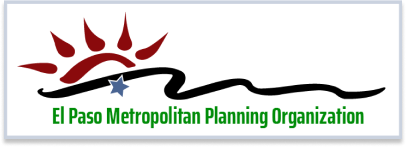US BCBP Border Patrol Stations
Status
Existing
Description
Border patrol stations at border crossings. Border patrol stations have CAD capabilities, and are able to provide video information to Border Patrol Communications Center.
Stakeholders
Physical Objects
Functional Objects
| Functional Object |
Description |
User Defined |
| Border Inspection Administration |
'Border Inspection Administration' performs administrative functions relating to the inspection of goods and vehicles at the border. |
False |
| Emergency Call–Taking |
'Emergency Call–Taking' supports the emergency call–taker, collecting available information about the caller and the reported emergency, and forwarding this information to other objects that formulate and manage the emergency response. It receives 9–1–1, 7–digit local access, and motorist call–box calls and interfaces to other agencies to assist in the verification and assessment of the emergency and to forward the emergency information to the appropriate response agency. |
False |
| Emergency Dispatch |
'Emergency Dispatch' tracks the location and status of emergency vehicles and dispatches these vehicles to incidents. Pertinent incident information is gathered from the public and other public safety agencies and relayed to the responding units. Incident status and the status of the responding units is tracked so that additional units can be dispatched and/or unit status can be returned to available when the incident is cleared and closed. |
False |
| Emergency Environmental Monitoring |
'Emergency Environmental Monitoring' collects current and forecast road conditions and surface weather information from a variety of sources. The collected environmental information is monitored and presented to the operator and used to more effectively manage incidents. |
False |
| Emergency Incident Command |
'Emergency Incident Command' provides tactical decision support, resource coordination, and communications integration for Incident Commands that are established by first responders at or near the incident scene to support local management of an incident. It supports communications with public safety, emergency management, transportation, and other allied response agency centers, tracks and maintains resource information, action plans, and the incident command organization itself. Information is shared with agency centers including resource deployment status, hazardous material information, traffic, road, and weather conditions, evacuation advice, and other information that enables emergency or maintenance personnel in the field to implement an effective, safe incident response. It supports the functions and interfaces commonly supported by a mobile command center. |
False |
| Emergency Response Management |
'Emergency Response Management' provides the strategic emergency response capabilities and broad inter–agency interfaces that are implemented for extraordinary incidents and disasters that require response from outside the local community. It provides the functional capabilities and interfaces commonly associated with Emergency Operations Centers. It develops and stores emergency response plans and manages overall coordinated response to emergencies. It monitors real–time information on the state of the regional transportation system including current traffic and road conditions, weather conditions, special event and incident information. It tracks the availability of resources and assists in the appropriate allocation of these resources for a particular emergency response. It also provides coordination between multiple allied agencies before and during emergencies to implement emergency response plans and track progress through the incident. It also coordinates with the public through the Emergency Telecommunication Systems (e.g., Reverse 911). It coordinates with public health systems to provide the most appropriate response for emergencies involving biological or other medical hazards. |
False |
| Emergency Routing |
'Emergency Routing' supports routing of emergency vehicles and enlists support from the Traffic Management Center to facilitate travel along these routes. Routes may be determined based on real–time traffic information and road conditions or routes may be provided by the Traffic Management Center on request. Vehicles are tracked and routes are based on current vehicle location. It may coordinate with the Traffic Management Center to provide preemption or otherwise adapt the traffic control strategy along the selected route. |
False |
Interfaces To
(View Context Diagram)
